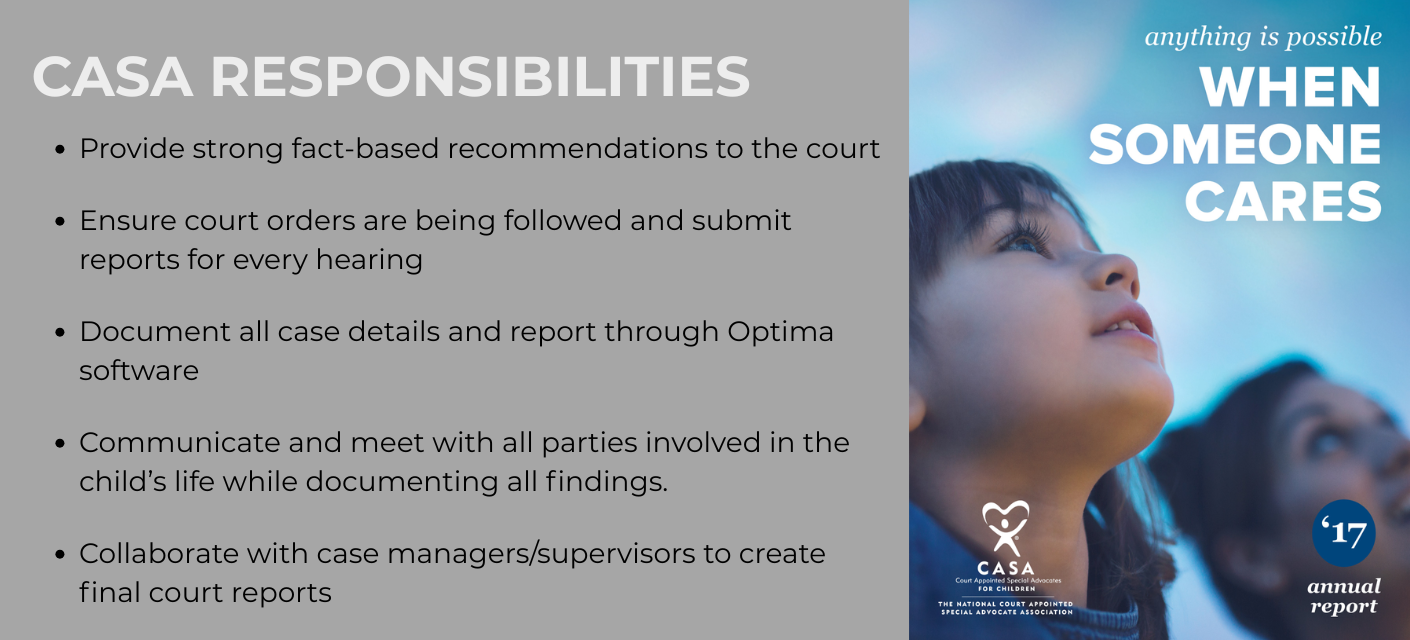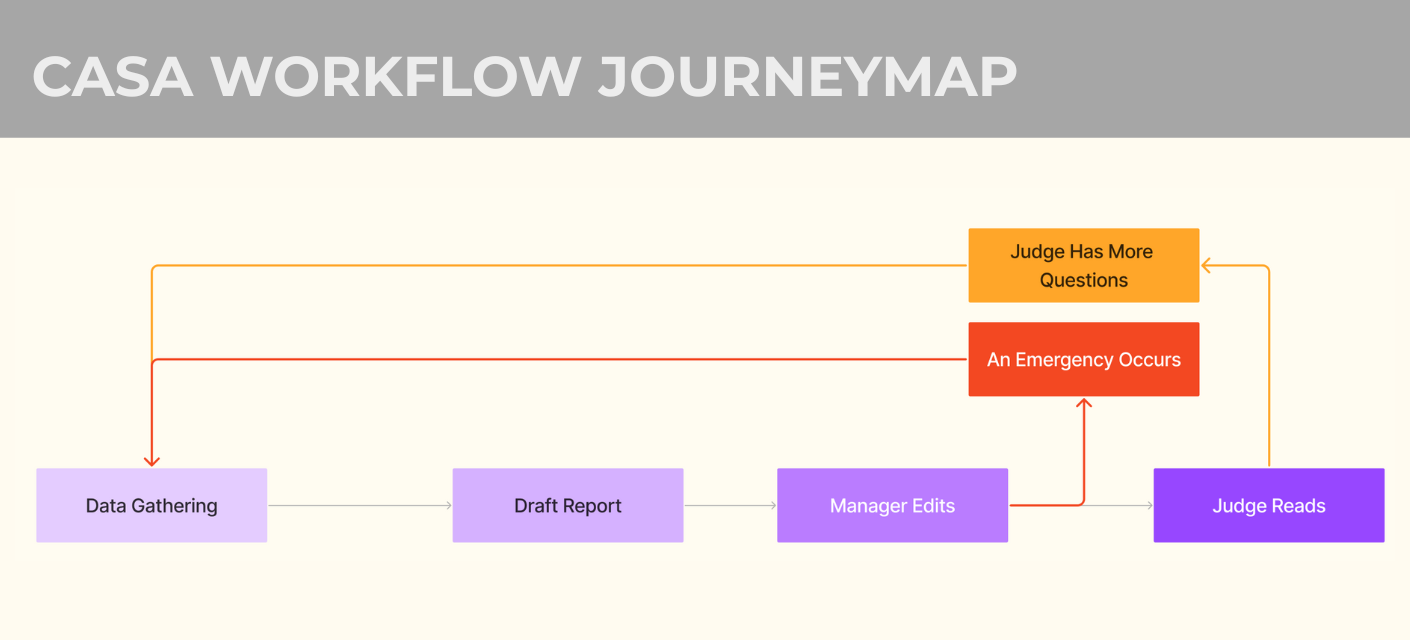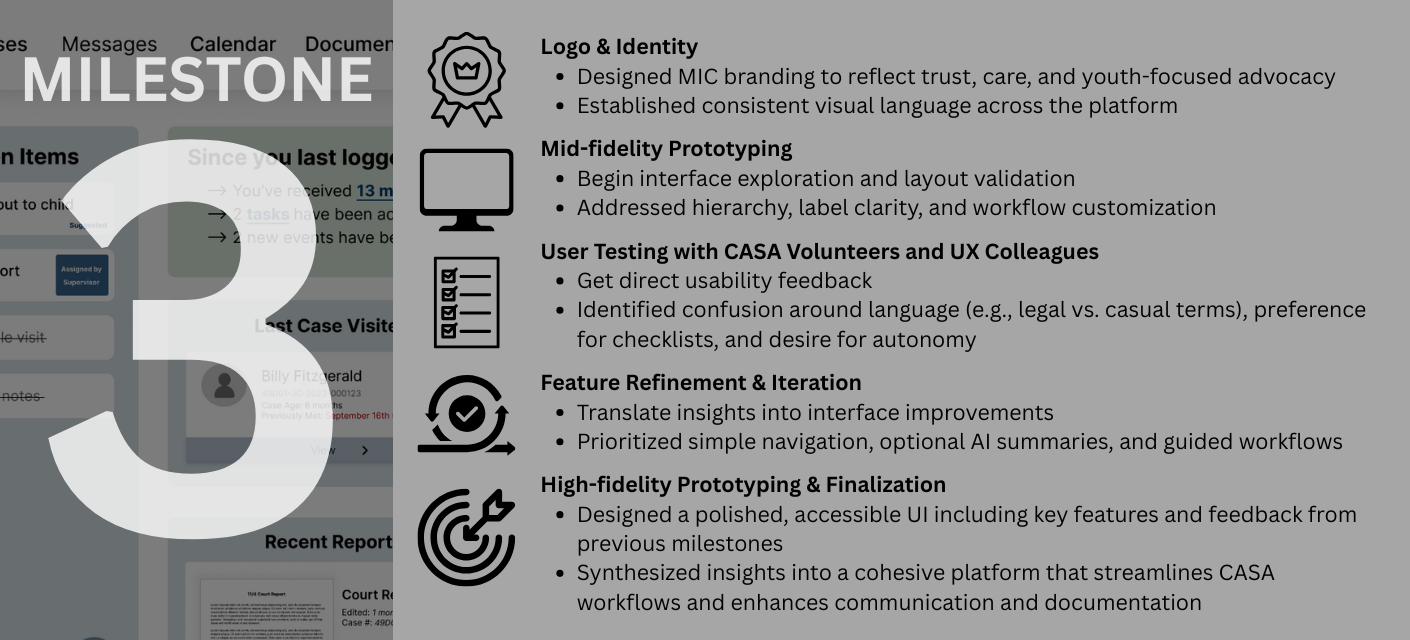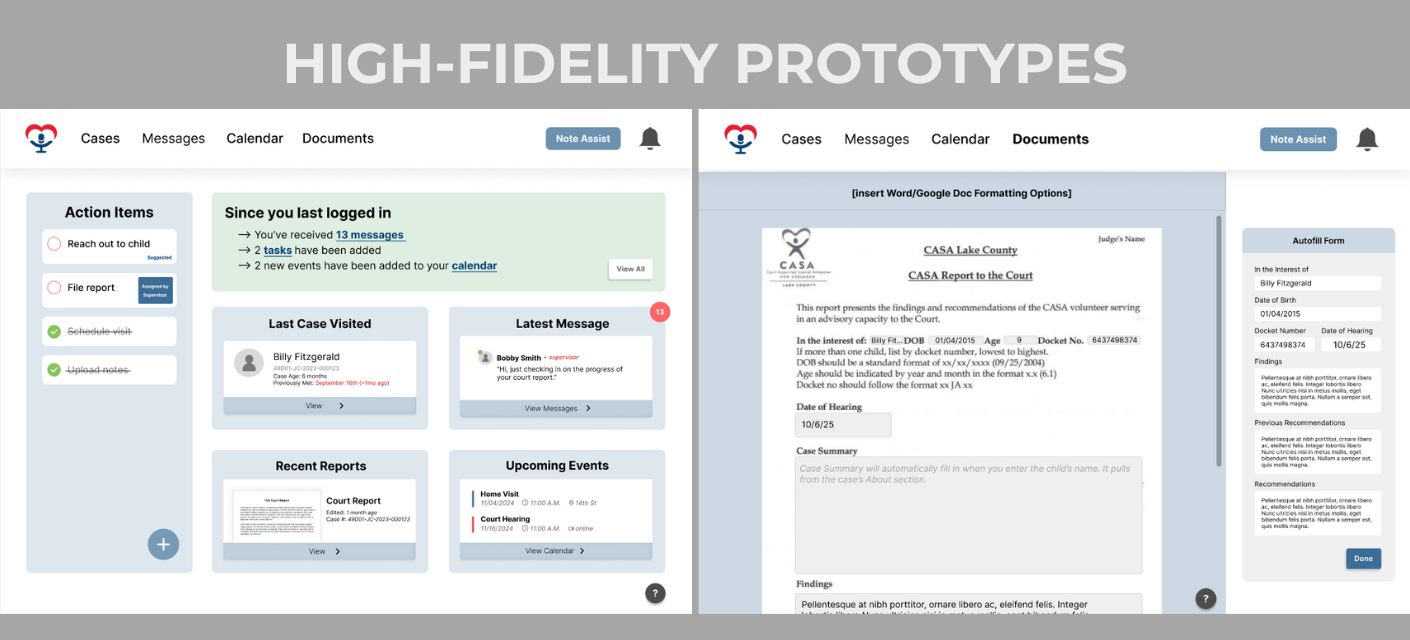MIC: Giving Children a Voice
Industry Sponsored Project - SaaS Design
Project Overview
Court Appoined Special Advocates (CASA) are volunteers who work with children experiencing abuse or neglect. Working on a case involves several meetings and continuous communication with those involved in a CASA’s court-appointed child’s life, as well as reviewing documents such as report cards, drug screenings, etc. All of this information must be managed and compiled into a written report, to be sent to a judge. This is usually a long, tedious process. This project aimed to create a Software as a Service (SaaS) platform to streamline the volunteers' workflow experience.
Project Deliverables
For this project's final deliverables, our team compiled the following products.
MILESTONE #1
How might we seek to understand the CASA process to identify pain points when gathering data for and writing reports?

In this milestone, we focused on understanding the CASA process to identify pain points in data gathering and report writing. Through secondary research, we examined official CASA handbooks, previous semester projects, and usability considerations for older users. Primary research included interviews with CASA volunteers, which highlighted inefficiencies in Optima, anxiety around report writing, and potential improvements such as speech-to-text and customizable templates.

After gathering our research, we went on to develop a journey map revealing that data collection, rather than report writing, was the most complex aspect. Early sketches and brainstorming led to ideas such as in-app messaging, AI-assisted note-taking, and an autofill report feature to address these challenges. These features went on to become the basis of the software's pages.

MILESTONE #2
How might we design interfaces that address CASA pain-points for a streamlined data collecting and report-writing platform?

Now that we understood the responsibilities and painpoints of CASA, we designed interfaces that streamline CASA volunteers’ workflows, starting with low-fidelity prototypes based on previous research. User testing with CASA volunteers and stakeholders provided insights into navigation issues, terminology concerns, and the need for customization. A co-design workshop contextualized the platform’s features within real CASA workflows, revealing preferences for paper-based note-taking, anonymity in communication, and checklists for home visits.

Mid-fidelity prototypes refined designs with clearer labels, optional AI tools, and structured layouts. Key takeaways emphasized simplicity, accessibility, and iterative refinements based on user feedback. After carefully iterating based on the feedback received, we worked to compile all our pages into a seamless SaaS prototype.
MILESTONE #3
How might we test, iterate, and create a high fidelity prototype of a streamlined report-writing platform?

Finally, to wrap our project up into a cohesive product, we transformed research insights into mid-fidelity and high-fidelity prototypes, focusing on simplifying CASA workflows like note-taking, reporting, and communication. Usability testing revealed confusion around navigation, unclear labels, and a need for more flexible tools. A stakeholder workshop helped ground our designs in real-life CASA practices, surfacing preferences for paper-based notes, home visit checklists, and optional anonymity in communication.

With this last bit of feedback, we refined the prototypes to include clearer hierarchy, simplified language, and features like AI-assisted report drafts—prioritizing accessibility, customization, and alignment with volunteers’ day-to-day habits.

Working on this project challenged me to design for a uniquely sensitive space where emotional impact, ethical responsibility, and usability had to coexist. This project deepened my understanding of how UX can empower social systems, especially when working with real stakeholders like CASA volunteers who rely on efficient, accessible tools under stressful conditions. From facilitating co-design workshops to iterating on prototypes based on feedback, I learned how to balance clarity, flexibility, and empathy in every design decision. Most importantly, MIC reinforced my belief that meaningful design starts by listening, not just to users' needs, but to the context and constraints that shape their work.
.jpg)







